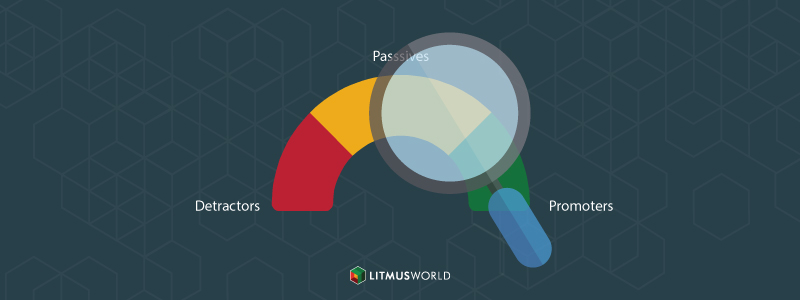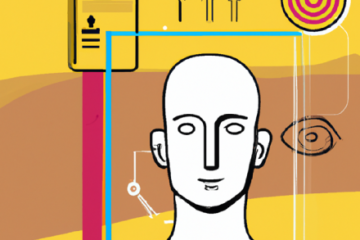How to design an NPS Questionnaire?
How to design an NPS Questionnaire?

Ask the right NPS question to get a constant pulse on your customer satisfaction and you will gain an accurate understanding of how your company, product or service is perceived. Embark on the process by determining the appropriate Net Promoter Score® survey template, and the impact will be decisive. Designing an NPS Questionnaire is an art. A real artist knows to ask just the right amount of questions. Nothing more; nothing less.
Just like in face-to-face conversations, the wording, tone, and phrasing of a survey question hugely impact someone’s response, hence your choice of words has the ability to effect a change in your customers’ feedback.
In this article, we shall look at how to design a conditional and contextual NPS questionnaire:

The NPS scale by concept is divided into 3 buckets – Passives, Promoters and Detractors. However, over time the NPS scale has evolved with it. We can now consider the following 5 buckets based on the NPS scale:
- Super Promoters (10)
- Promoters (9)
- Passives (7-8)
- Detractors (4-6)
- Super Detractors (0-3)
Before we jump into designing the structure of the questionnaire, let us get some questionnaire hygiene out of the way.
- Always have a neutral colour on the rating scale. Preferably a grey tone. Having the predefined NPS colours on the scale influences the rating. Red, by the nature of humans, is a colour that we preferably do not choose. Green, on the other hand, is a cooler colour and we tend to choose that. This influences the NPS scores negatively. Do we really want false promoters just for the sake of it?
- Do not have pre-selected values for the respondents to change later. People tend to neglect such questions and the score stays. So if you have chosen a default 10, your NPS scores will eventually tip towards a positive number, but may not always match with the emotion in the open text comments. Likewise, for a 0, your scores will tip to a negative score and end up raising fire within your organization despite providing a positive experience.
- The origin of the scale can either be made from left-to-right or from right-to-left. Each of these cases has its own pros and cons. A study by the Scientific American states that 5-30% of the world population is left-handed. The remaining are right-handed. This means that if you go by the sheer volume of right-handed people if you have a left-to-right scale, people tend to click a higher number as it is closer to the thumb. While this can avoid false-negative ratings, this can also influence false positive ratings. Similarly, for a right-to-left screen, while you really make it hard for people to rate a positive and the fact that the added effort taken by the respondent specifies genuineness, you end up influencing false negatives. Which is why we propose the LitmusWorld wheel. There the respondent can use a wheel-styled rating scale and only the real rating passes through the system. Genius isn’t it?
- Always keep the language of the question neutral. The questions should not be leading in any way. A leading question influences the score and is often far from the truth.
Having said that let’s jump into designing the questionnaire. LitmusWorld preaches a 3 screen approach where our intention is to reduce the time taken by the respondents in providing the feedback. Reducing this time results in significantly lower drop-offs and over 85% of the respondents complete the entire questionnaire.
The three-screen approach helps in capturing the 3 key elements of customer experience:
- Emotion
- Rationale
- Expression
The basics of designing a questionnaire are asking contextual and relevant questions. For example, if a customer is a passive ask him relevant questions and if a customer is a super promoter ask him to appreciate the experience owner. While every business is different and so is every touchpoint, here is a generalised framework of designing an NPS questionnaire:
Q1. Based on your recent experience with <your brand name>, how likely are you to recommend us to a family or a friend? (Followed by a LitmusWorld wheel or a 0-10 scale neutral rater)

Based on the answer to this question ask the following conditional questions to the respondent:
Super Detractors –
Q2. Please highlight your issue in detail here and we will get back to you with a resolution in the next 2 hrs. (Followed by an open text field)
A super detractor is often irate. Getting straight to the point here helps. The moment a customer responds, raise a ticket and assign it to a customer service representative to take it to closure and ask the respondent again for feedback after the query is resolved. Agility here is the key to converting a super detractor to a promoter.
Detractors –
Q2. We’re really sorry to hear that! Please select the service delivery factors you were unhappy with: (followed by a multi-select list of experience influencers such as ambience, staff, product, so on and so forth)
The idea here is to understand the reason why he is unhappy. If the reasons that come up here are frequent, it is time to make some strategic changes to the processes. As these are the potential reasons why you may lose a customer to a competitor.
Q3. We shall make sure we work on providing you with a better experience in the future. Please highlight the areas of improvements here: (followed by an open text field)
Here the respondent will express his emotions in details and also tell you why he was unhappy. You will often find insights here that may not always be feasible to capture in a standard questionnaire.
Passives –
Q2. We’re sorry to hear that we couldn’t live up to your expectations. Kindly highlight the areas where we could’ve done better: (followed by a multi-select list of experience influencers such as ambience, staff, product, so on and so forth)
Q3. Kindly highlight the areas where you think we did good: (followed by a multi-select list of experience influencers such as ambience, staff, product, so on and so forth)
These questions combined will help you gauge the tipping point of the passives. Passives generally tend to give brands another chance before they move on to a competitor. Grab this opportunity and make the right amends to the internal processes.
Q4. Kindly suggest areas of improvements that will make it a 10/10 experience for you: (followed by an open text field)
Promoters –
Q2. We’re glad you liked us. What did we miss to deserve a 10/10 score? (followed by an open text field)
A promoter is already happy with the overall experience. It is important to understand his expectations and bridge the perception gap in the service quality model.
Super promoters –
Q2. Yay! We shall pat our backs for this. Kindly share your thoughts on what we did to deserve a 10/10 score. (we shall add your feedback to our wall-of-appreciations) (followed by an open text field)
Let your customers appreciate you for all the good things you have done. This acts as a strong motivator for your employees and also testifies if you have taken the steps in the right direction.
Now that we have captured the customer’s feedback its time to utilise the last screen to make your respondents take a specific action with your brand:
For Super detractors – Give them a support number, a support email id or a ticket number; For a detractor – try luring him/her with a discount on their next purchase to make up for their bad experience; For a passive – simply ask him to follow your brand on the social channels to stay updated with new and updated offerings; For a Promoter – Ask him to review your brand on various platforms and for a Super Promoter – Ask him to share his feedback on social media with the relevant hashtags.
There’s so much that you can do with customer feedback. In the three-screen approach, you have not only managed to capture customer emotions, but also the reason why he/she is unhappy. Informed the relevant experience owners about the gaps, converted border-line unhappy customers to loyalists, ensured repeat purchase and improved your social reputation.
There is a lot more than you can do with a dynamic questionnaire design backed by a strong and stable platform to do the heavy lifting for you. The only restriction then is your imagination!


